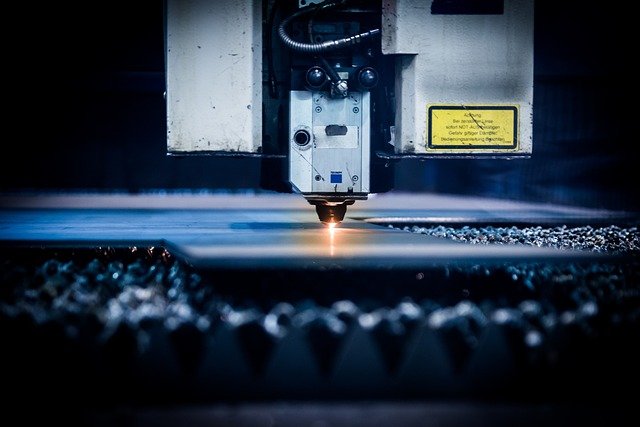Laser Welding Machines: Precision Metal Joining Technology
Laser welding machines represent a revolutionary advancement in metal joining technology, utilizing focused laser beams to create precise, high-quality welds across various materials. These sophisticated devices have transformed manufacturing processes by offering unparalleled accuracy, minimal heat-affected zones, and exceptional weld quality. Understanding how laser welding works, which materials are compatible, and the precision capabilities can help manufacturers make informed decisions about integrating this technology into their operations.

How Do Laser Welding Machines Work?
To explore the basic working principles of a laser welding machine, we must first understand the fundamental physics behind the process. Laser welding operates by generating a concentrated beam of coherent light through stimulated emission of radiation. The laser source, typically a fiber laser, CO2 laser, or diode laser, produces photons that travel through an optical delivery system consisting of mirrors, lenses, and beam-shaping components.
The focused laser beam creates intense heat when it contacts the workpiece surface, rapidly melting the material to form a weld pool. The concentrated energy density, often exceeding 10^6 watts per square centimeter, allows for precise control over the melting process. As the laser moves along the joint path, the molten metal solidifies behind it, creating a continuous weld seam.
The process can be performed in two primary modes: conduction welding and keyhole welding. Conduction welding uses lower power densities to melt the surface layers, while keyhole welding employs higher intensities to create a vapor-filled cavity that penetrates deeper into the material. This versatility allows operators to adjust parameters based on material thickness and application requirements.
Which Materials Work Best with Laser Welding?
Understanding common materials suitable for laser welding is crucial for successful implementation. Stainless steel ranks among the most compatible materials due to its favorable absorption characteristics and resistance to cracking. The material’s uniform composition allows for consistent heat distribution, resulting in strong, aesthetically pleasing welds.
Carbon steel also responds well to laser welding, though considerations must be made for carbon content and potential hardening in the heat-affected zone. Low-carbon steels typically produce excellent results with minimal post-weld treatment required.
Aluminum presents unique challenges but remains highly suitable when proper techniques are employed. The material’s high thermal conductivity and reflectivity require specific laser wavelengths and power settings. Aluminum alloys like 6061 and 5052 demonstrate excellent laser weldability when parameters are optimized.
Titanium and titanium alloys excel under laser welding conditions, producing clean welds with minimal contamination when proper shielding gas protection is maintained. Copper and copper alloys, while more challenging due to high reflectivity, can be successfully welded using advanced laser systems with appropriate wavelengths.
What Precision Can Laser Welding Achieve?
Learning about precision and accuracy in laser welding reveals why this technology has become indispensable in high-precision manufacturing. Modern laser welding systems can achieve positional accuracy within ±0.1mm, with some advanced systems reaching even tighter tolerances of ±0.05mm or better.
The focused beam diameter typically ranges from 0.1mm to 2mm, allowing for extremely narrow weld seams and minimal heat-affected zones. This precision translates to reduced material distortion, making laser welding ideal for thin-section materials and delicate components.
Repeatability represents another crucial aspect of laser welding precision. Once parameters are established, the process can reproduce identical results across thousands of parts with minimal variation. This consistency proves invaluable in automotive, aerospace, and electronics manufacturing where quality standards demand exceptional repeatability.
The technology’s ability to control heat input precisely enables welding of dissimilar materials with different melting points and thermal properties. Advanced beam shaping and power modulation features allow operators to customize the energy distribution for optimal results across various joint configurations.
| Machine Type | Manufacturer | Power Range | Price Range (USD) |
|---|---|---|---|
| Fiber Laser Welder | IPG Photonics | 1-6kW | $80,000-$300,000 |
| CO2 Laser Welder | Trumpf | 2-8kW | $150,000-$500,000 |
| Handheld Laser Welder | Raycus | 1-2kW | $15,000-$40,000 |
| Automated Laser Cell | Coherent | 3-10kW | $200,000-$800,000 |
Prices, rates, or cost estimates mentioned in this article are based on the latest available information but may change over time. Independent research is advised before making financial decisions.
Applications and Industries
Laser welding machines find extensive use across numerous industries where precision and quality are paramount. Automotive manufacturers utilize these systems for body panel joining, transmission components, and battery pack assembly in electric vehicles. The aerospace industry relies on laser welding for turbine blade repair, structural components, and fuel system assemblies.
Electronics manufacturing benefits from the technology’s ability to create precise joints in sensitive components without thermal damage to surrounding areas. Medical device production leverages laser welding’s cleanliness and precision for implantable devices, surgical instruments, and diagnostic equipment.
The technology continues expanding into new applications as laser sources become more powerful and affordable. Recent developments include multi-beam systems that can weld multiple joints simultaneously and hybrid processes that combine laser welding with other joining methods.
Laser welding machines have established themselves as essential tools in modern manufacturing, offering unmatched precision, quality, and versatility. The technology’s ability to work with diverse materials while maintaining exceptional accuracy makes it invaluable across industries demanding high-quality metal joining solutions. As laser technology continues advancing, we can expect even greater capabilities and broader applications in the years ahead.




